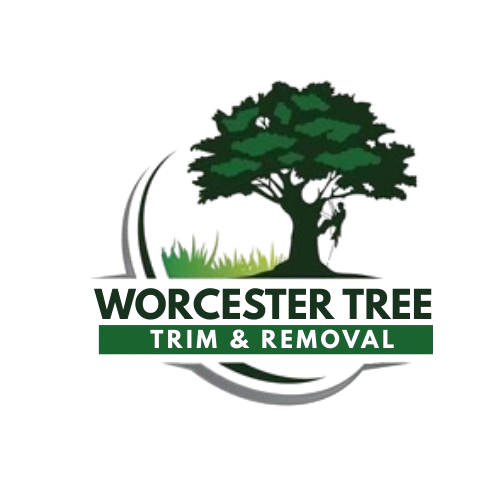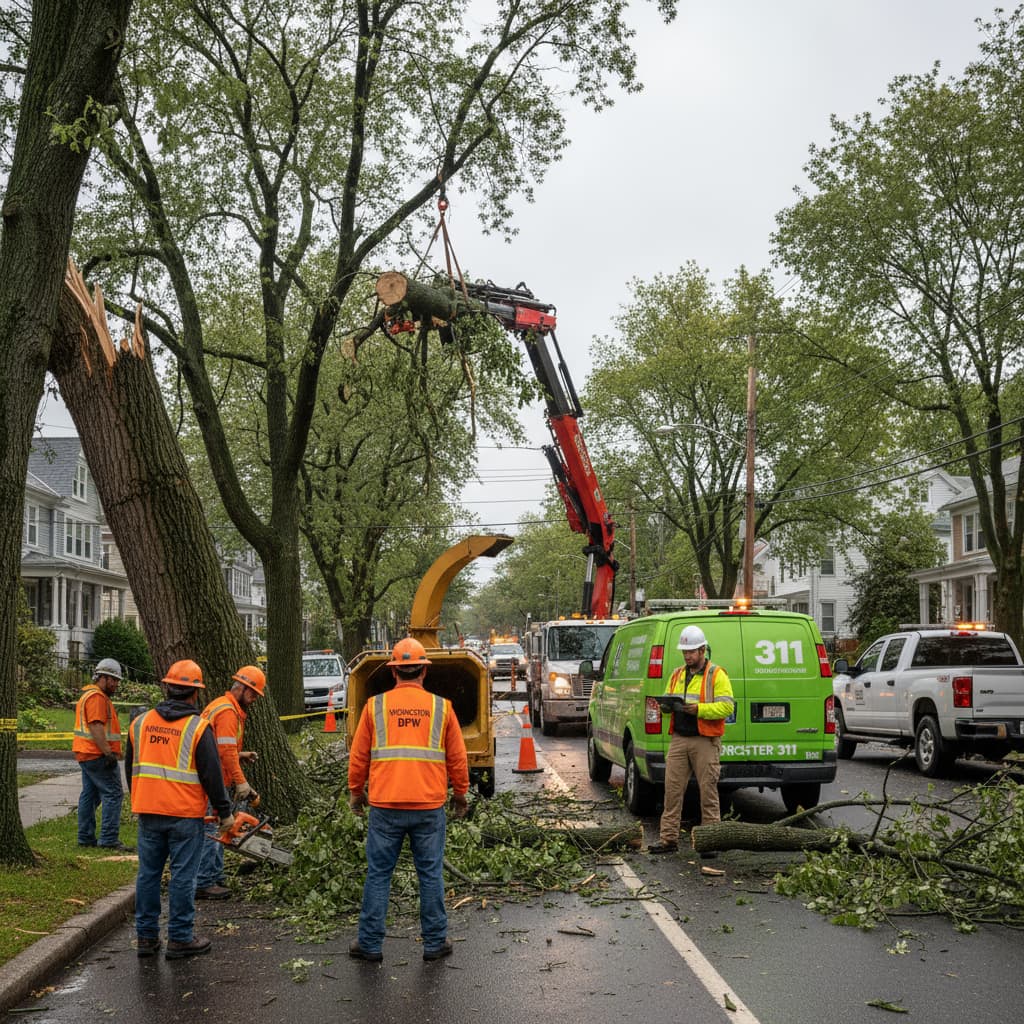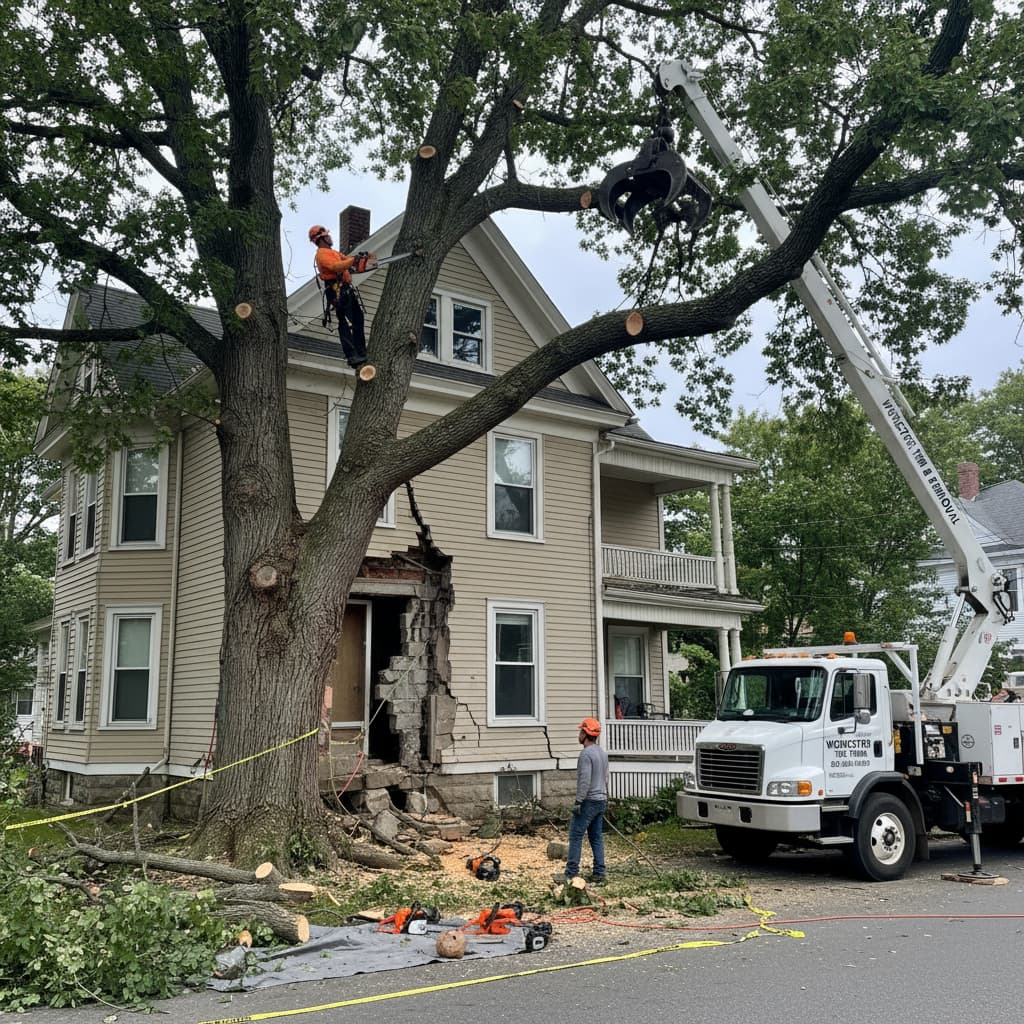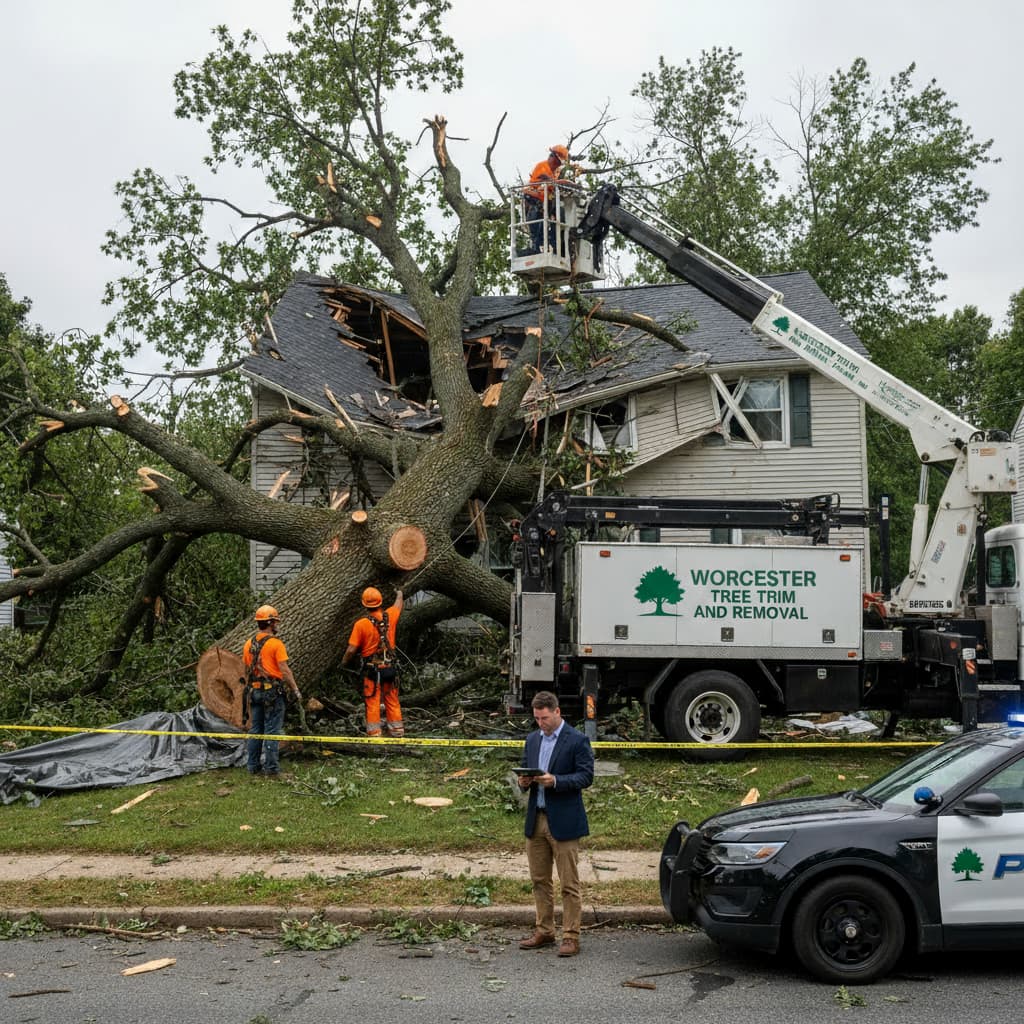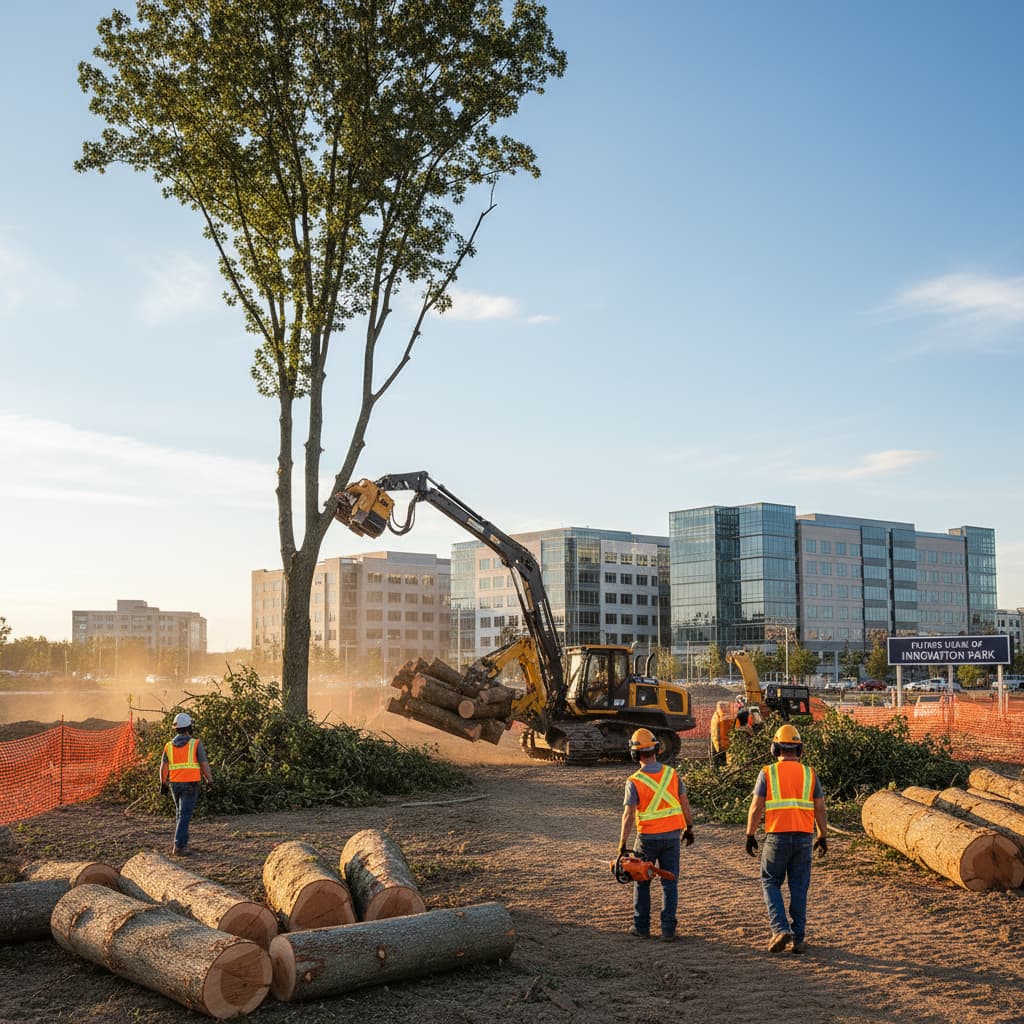
Seasonal Guide: When to Book Tree Trimming in Central MA
Tree Trimming Worcester
Finding a reliable tree trimming service becomes more important when you understand that proper timing can mean the difference between healthy, thriving trees and stressed plants vulnerable to disease and storm damage. Worcester residents face unique seasonal challenges, from harsh winter storms that batter the trees lining Green Hill Park to summer heat stress affecting mature canopies throughout neighborhoods like College Hill and Crown Hill-Piedmont.
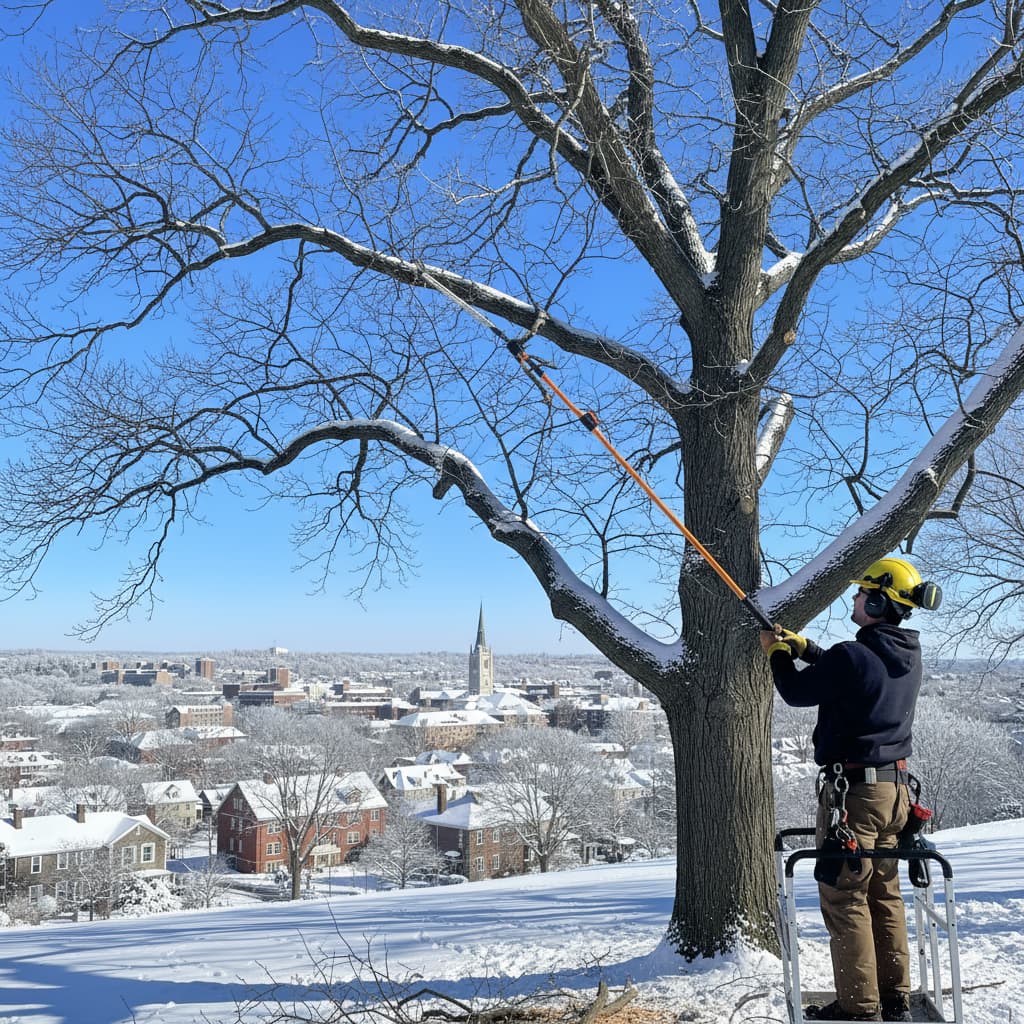
Winter: The Prime Season for Tree Trimming
Professional arborists consistently recommend late winter as the optimal time for most tree pruning in Central Massachusetts. This dormant season window, typically January through early March, offers multiple advantages for both tree health and practical considerations.
Why Winter Trimming Works Best
During dormancy, trees have halted active growth and entered their natural resting phase. This biological state allows them to recover more efficiently from pruning cuts, directing energy toward healing rather than supporting new growth. For Worcester properties with mature oaks along Holy Cross’s campus perimeter or maples shading historic triple-deckers in the Eastside neighborhoods, winter pruning minimizes stress during the most vulnerable healing period.
The absence of leaves provides clear visibility of the tree structure, enabling certified arborists to identify problems that remain hidden during growing seasons. Dead branches, structural defects, and crossing limbs become obvious against winter skies, allowing for precise cuts that improve overall tree architecture.
Disease and pest risks remain minimal during cold months. Many fungal pathogens and insects that cause problems during warmer seasons stay dormant through winter, reducing the likelihood of infection through fresh pruning wounds. This proves especially important for disease-susceptible species like oak trees, which should always receive winter pruning to prevent oak wilt transmission.
Practical Winter Advantages
Frozen ground provides stable footing for equipment and ladder placement, crucial when working around Worcester’s steep terrain near areas like Bancroft Tower or the slopes surrounding the DCU Center. Additionally, professional tree services often offer better availability and competitive pricing during the winter months when demand typically decreases.
Spring Trimming: Timing is Everything
Spring pruning requires careful timing and species-specific knowledge. Early spring, before bud break, can work well for certain trees, but homeowners searching for tree trimming near me should understand the nuances involved.
Early Spring Opportunities
The window between late winter and early spring offers opportunities for structural pruning of young trees and corrective work on storm-damaged limbs. This timing allows wounds to heal quickly as trees enter their active growth phase, but requires completion before new growth begins consuming the tree’s energy reserves.
For fruit trees common in Worcester area yards, early spring pruning promotes better fruit production and allows sunlight penetration to interior branches. However, this timing demands precise scheduling to avoid interfering with flowering schedules.
Species-Specific Spring Considerations
Spring-flowering trees like dogwoods, magnolias, and ornamental cherries require different timing than summer-blooming species. These early bloomers develop next year’s flower buds shortly after flowering ends, meaning any pruning must occur immediately after blooms fade to avoid sacrificing next season’s display.
Maple trees, abundant throughout Worcester’s neighborhoods and parks, present special timing challenges. These trees experience heavy sap flow during early spring, making winter pruning preferable to avoid excessive bleeding that can stress the tree.
Summer Trimming: Limited but Important Applications
While not ideal for major pruning, summer offers specific opportunities for maintenance and corrective work when trees are fully leafed out. This visibility helps property owners and arborists assess problems that only become apparent during peak growing season.
Appropriate Summer Pruning Tasks
Dead branch removal should occur immediately when discovered, regardless of season. Summer storms around Worcester can break limbs throughout the growing season, creating safety hazards that require prompt attention near areas like the Blackstone River Bikeway or around residential properties in Quinsigamond Village.
Light corrective pruning can improve air circulation through dense canopies, reducing disease pressure during humid summer months. This approach works particularly well for trees planted in tight quarters, common throughout downtown Worcester or in established neighborhoods where air movement may be restricted.
Summer Pruning Precautions
Fresh cuts during the active growing season create entry points for diseases and pests when populations peak. Any summer pruning should be minimal and performed by experienced professionals who understand proper wound treatment and timing. Large pruning projects should be postponed until the dormant season unless emergency conditions exist.
Fall: Generally Not Recommended
Fall pruning typically creates more problems than benefits in the Central Massachusetts climate. Trees entering dormancy need time to prepare for winter stress, and fresh wounds may not heal adequately before cold weather arrives.
Why Fall Timing Fails
New growth stimulated by fall pruning won’t have time to harden off before winter, leaving trees vulnerable to frost damage. This poorly timed growth wastes energy reserves needed for winter survival and spring recovery.
Additionally, fall’s wet conditions combined with moderate temperatures create ideal environments for fungal diseases to establish in fresh cuts. Massachusetts’ fall weather patterns make this season particularly risky for tree wound infections.
Booking Strategy for Worcester Residents
Understanding optimal timing helps property owners plan tree care schedules and secure professional services when demand and pricing align favorably.
Winter Booking Advantages
Scheduling winter tree trimming provides access to the best available arborists when their schedules allow for thorough, unhurried work. Worcester Tree Trim and Removal and other professional services often have better availability during the dormant season, allowing for flexible scheduling and comprehensive tree assessments.
Winter pricing frequently offers the best value as demand decreases during colder months. Property owners can often secure preferred dates and comprehensive service packages when booking winter appointments.
Advanced Planning Benefits
Booking tree trimming during optimal seasons requires advance planning. Professional services often schedule winter work months ahead as property owners recognize the benefits of dormant season pruning. Early booking ensures availability during the preferred timing window.
Emergencies aside, delaying tree trimming because the season isn’t perfect often leads to postponing necessary work indefinitely. While winter represents the ideal timing, addressing tree health needs during any season proves better than neglecting maintenance entirely.
Species-Specific Timing for Worcester Trees
Central Massachusetts landscapes feature diverse tree species, each with particular pruning requirements and timing preferences.
Common Worcester Species Guidelines
Oak trees should receive winter pruning exclusively, except for emergencies. Oak wilt disease transmission peaks during the active season, making dormant season work essential for these valuable shade trees found throughout Worcester’s neighborhoods.
Pine and other evergreens benefit from late winter pruning before new growth begins. These trees require minimal pruning, but timing matters when shaping is necessary or when removing dead branches from storm damage.
Fruit trees perform best with late winter pruning that promotes structure and fruit production. This timing allows energy allocation toward productive growth and improves harvest quality.
Professional Service Selection
Choosing qualified tree trimming involves verifying credentials and experience with local growing conditions and tree species common to Worcester area properties.
Certified arborists understand species-specific requirements and timing considerations that ensure optimal results. They carry appropriate insurance and use proper techniques that protect both tree health and property safety during pruning operations.
Worcester Tree Trim and Removal combines local expertise with professional standards, understanding how Central Massachusetts’ climate and growing conditions affect timing decisions and pruning outcomes for area property owners.
